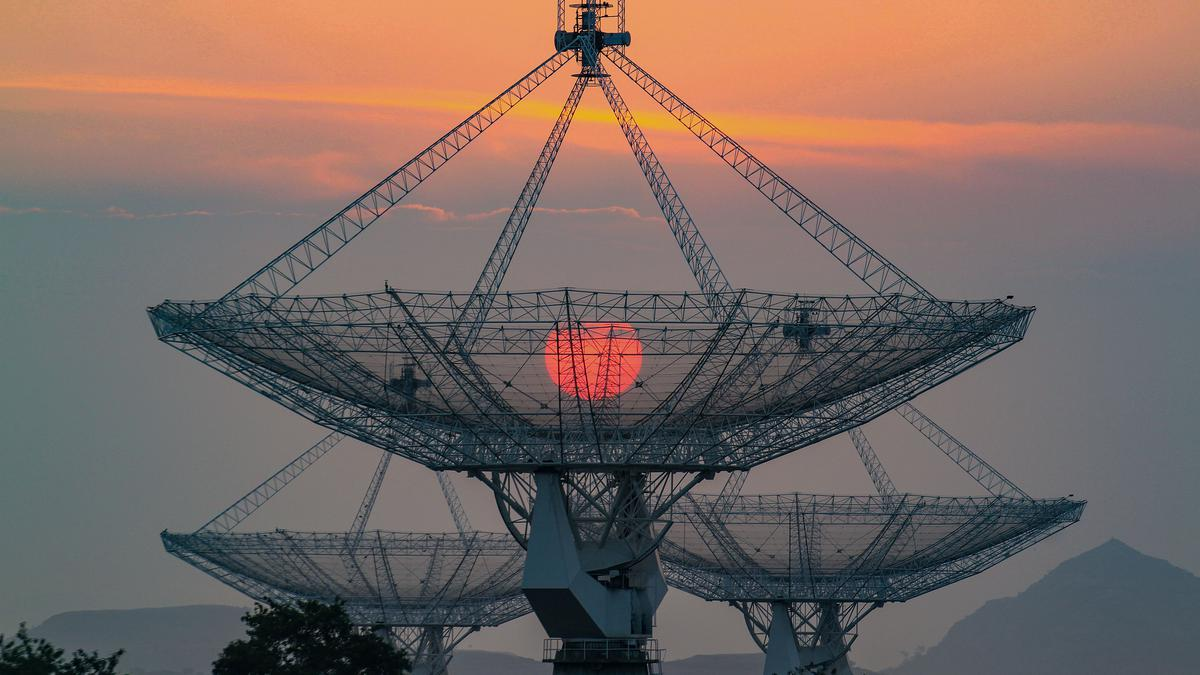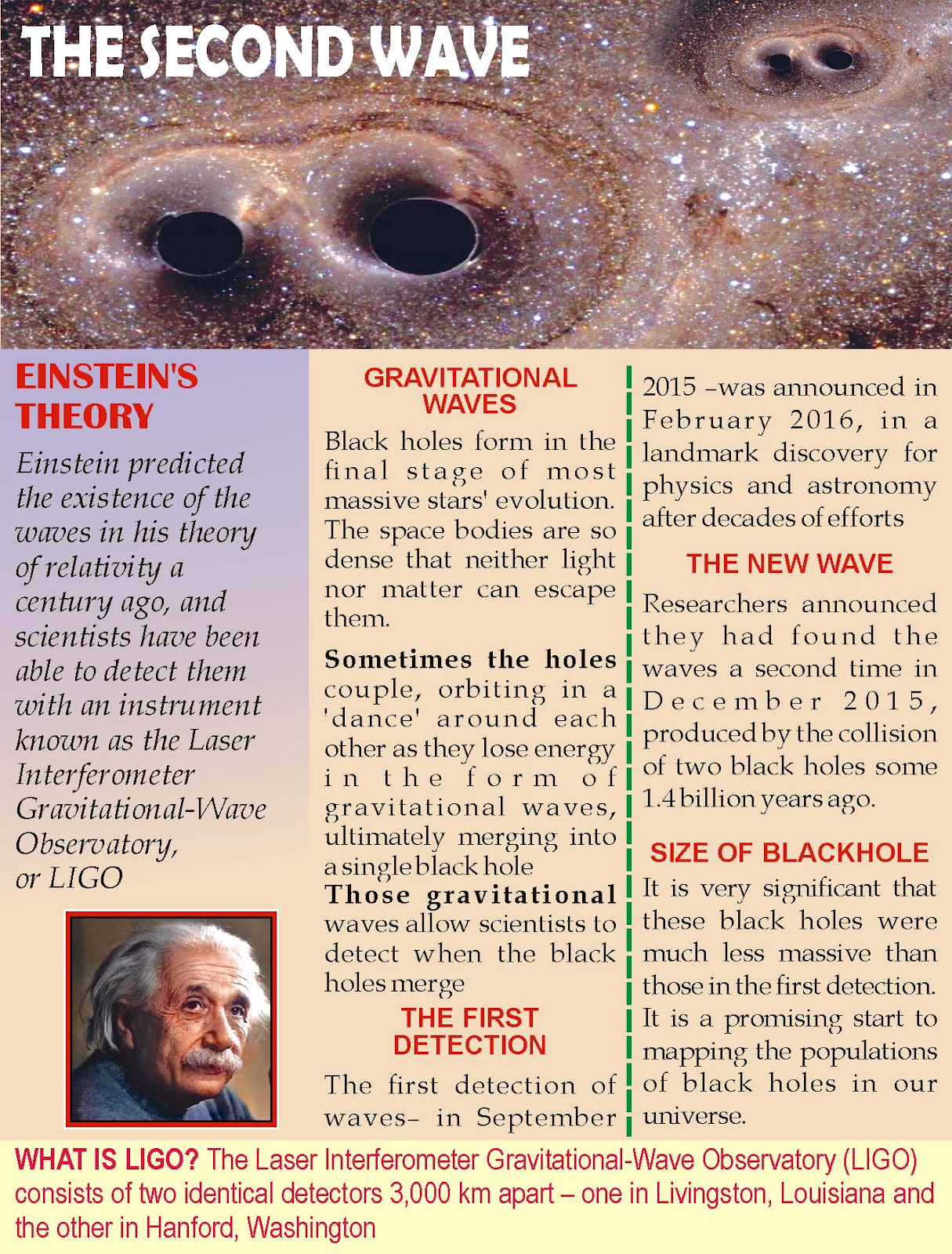Science & Technology
Gravitational Waves
- 04 Jul 2023
- 6 min read
For Prelims: India’s Giant Metrewave Radio Telescope, Gravitational Waves, Pulsars
For Mains: Gravitational Waves
Why in News?
Recently, an international team of astronomers announced scientific evidence confirming the presence of gravitational waves using pulsar observations.
- India’s Giant Metrewave Radio Telescope (GMRT) was among the world’s six large telescopes that played a vital role in providing this evidence.
What are the Key Findings?
- They reported the first direct evidence for the relentless vibrations of space-time caused by ultra-low frequency gravitational waves.
- They also set new limits on the strength and frequency of these waves, which are consistent with theoretical predictions.
- They are also tantalisingly close to the discovery of nanohertz gravitational waves, which would open up new possibilities for studying galaxy evolution, cosmology, and fundamental physics.
How Does GMRT Detect Gravitational Waves?
- GMRT detects gravitational waves by using pulsars-the only accessible celestial clocks for humans, which are rapidly rotating neutron stars.
- Pulsars emit regular pulses of radio waves that can be used to measure their rotation periods and distances with high precision.
- By observing Pulsar timing arrays (PTAs) distributed across the sky, GMRT can look for tiny variations in their pulse arrival times caused by gravitational waves passing through the Earth-pulsar line of sight. This technique is known as pulsar timing.
- GMRT is a crucial player in the PTA experiment, as it provides unique data at low radio frequencies and high sensitivity.
Note:
- PTAs are international collaborations of radio telescopes that observe hundreds of pulsars over many years to search for gravitational waves in the nanohertz band.
- GMRT is part of the Indian Pulsar Timing Array (InPTA), which is a collaboration of Indian and Japanese researchers that uses GMRT data along with other telescopes.
What is GMRT?
- GMRT is a low-frequency radio telescope consisting of an array of 30 fully steerable parabolic radio telescopes of 45-meter diameter.
- It is located near Narayangaon, Pune in India, and operated by the National Centre for Radio Astrophysics (NCRA), a part of the Tata Institute of Fundamental Research, Mumbai.
- It is one of the largest and most sensitive radio telescope array in the world at low frequencies.
- GMRT has recently undergone significant upgrades in its receivers and electronics, which have improved its sensitivity and bandwidth. It is now known as the upgraded GMRT (uGMRT).
What are Gravitational Waves?
- About:
- Gravitational waves are ripples in space-time caused by violent and energetic processes in the Universe.
- Albert Einstein predicted their existence in his general theory of Relativity in 1916.
- Production of Gravitational Waves
- Cataclysmic Events: The strongest gravitational waves originate from colliding black holes, supernovae, and colliding neutron stars.
- Neutron Star Rotation: Gravitational waves can also be produced by the rotation of non-perfectly spherical neutron stars and possibly remnants of gravitational radiation from the Big Bang.
- Features and Detection
- Gravitational waves are challenging to detect due to their weak interaction with matter.
- Gravitational waves were first detected in 2015 using an experiment involving Laser Interferometer Gravitational Observatory (LIGO) detectors.
- Sensitive instruments like interferometers, such as the LIGO, are developed to detect gravitational waves by measuring tiny disturbances in space-time.
- Gravitational waves are challenging to detect due to their weak interaction with matter.
UPSC Civil Services Examination, Previous Year Question (PYQ)
Prelims
Q. Recently, scientists observed the merger of giant ‘blackholes’ billions of light-years away from the Earth. What is the significance of this observation? (2019)
(a) ‘Higgs boson particles’ were detected.
(b) ‘Gravitational waves’ were detected.
(c) Possibility of intergalactic space travel through ‘wormhole’ was confirmed.
(d) It enabled the scientists to understand ‘singularity’
Ans: (b)
Q. What is the purpose of ‘evolved Laser Interferometer Space Antenna (eLISA)’ project? (2017)
(a) To detect neutrinos
(b) To detect gravitational waves
(c) To detect the effectiveness of missile defence system
(d) To study the effect of solar flares on our communication systems
Ans: (b)
- “evolved Laser Interferometer Space Antenna (eLISA)” is a project to measure gravitational waves in the frequency range of 0.1mHz to 100mHz.
- The project consists of 3 spacecrafts which will fly in a triangular path around the earth. The arm length of each edge of this imaginary triangle will be about 50 million km.
- Inside these spacecrafts will be placed free falling cubes with 46 mm side. If these free falling cubes are hit by gravitational waves, then the change in the distance between these cubes will be accurately measured by Laser interferometer.
- Therefore, option (b) is the correct answer








